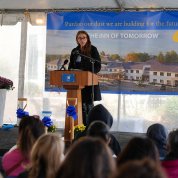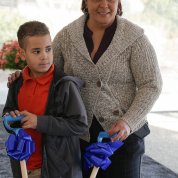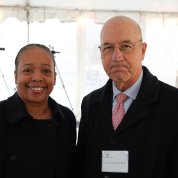Children’s Inn at NIH Breaks Ground on the ‘Inn of Tomorrow’
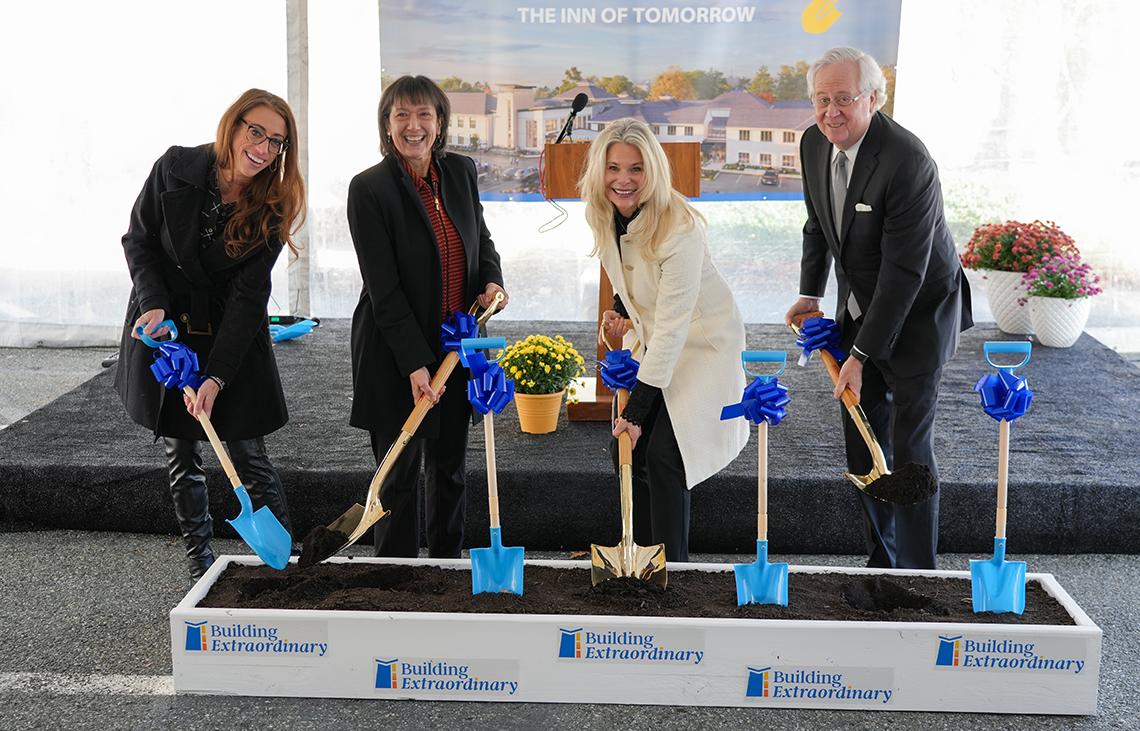
Photo: Children's Inn at NIH
The Children’s Inn at NIH celebrated the start of the 15,000 square-foot expansion project and renovation that will increase capacity by 25% during a groundbreaking ceremony on Nov. 13.
Scheduled to open in 2027, the project—referred to as “The Inn of Tomorrow”—will transform the Inn into a state-of-the-art welcoming facility where families feel even more supported, connected and cared for during one of the most challenging times of their lives.
“Our mission of providing a place like home for children undergoing treatment for rare and serious diseases and their families here at NIH will remain the heart of this project,” said Inn CEO Jennie Lucca. “One of our key objectives is to keep pace with the groundbreaking research that’s happening right across the street at the Clinical Center.”
Once complete, the renovation and expansion will, among other things, add eight apartment-style guest suites designed to meet the needs of patients who require isolation precautions, a two-story Tower of Hope that will serve as a beacon and welcoming resident services hub, and a covered, ADA-accessible pedestrian bridge that will connect the Inn to the Clinical Center (CC). Additionally, the Inn’s existing 63,000 square feet will undergo a renovation.
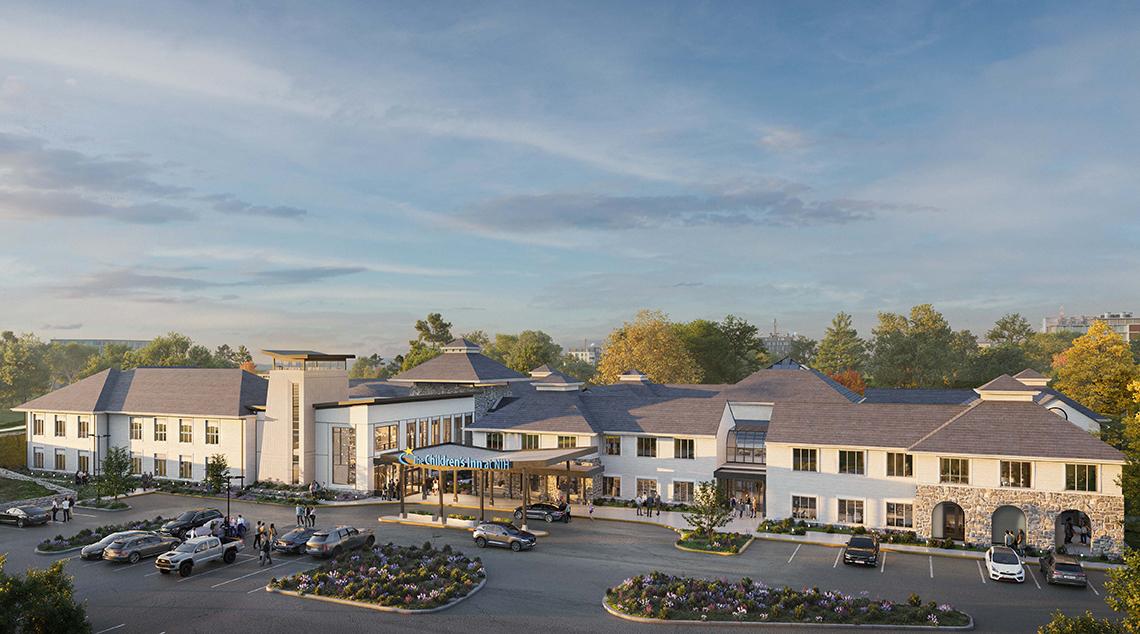
Photo: Children's Inn at NIH
During construction, the Inn will continue to serve pediatric patients and their families. Lucca said the Inn has secured apartments in nearby Bethesda for families as capacity on site at the Inn will be limited.
Once complete, the Young Adult Quarters at Bldg. 15B will add an additional six rooms. Located across the street from the Inn and the CC, the quarters will provide accommodations designed to meet the needs of young adults enrolled in clinical studies and their caregivers.
The ceremony resulted from years of planning and hard work, explained Brian Kelly, Chair of the Inn’s Board of Directors. In 2018, the Inn released a strategic plan that called for a “state-of-the-art smart living environment.” The Board assembled a master planning advisory committee. They worked with architects, building contractors and NIH leadership to move the project forward.
“A lot of really thoughtful work went into making this—as Jennie described—a place like home,” he said.

Photo: Children's Inn at NIH
Many pediatric patients participate in clinical research at NIH because they have rare conditions that cannot be treated anywhere else, a point emphasized by NIH Director Dr. Monica Bertagnolli at the groundbreaking. NIH researchers conduct research on these diseases to understand their causes and improve diagnostic and treatment options.
“We at NIH rely on the Children’s Inn to provide a home away from home for patients and their families while they participate in clinical research,” she said.
The late CC Director Dr. John Gallin often referred to the CC as the “House of Hope,” Bertagnolli recalled. The Inn is a big reason for that nickname. The hospital cares for a child’s medical needs while the Inn provides comfort and support to the whole family. NIH’s partnership with the Inn allows scientists to work with patients and their families to advance research and develop life-saving treatments.
“Without the Children’s Inn, we would not have nearly the successes we see with treatment for young patients,” she said.
Jamie Gentille first walked through the Inn’s doors more than three decades ago as “a really scared 10-year-old kid” who had no idea what to expect. She had recently enrolled in a research study at the CC.
“When I came here 35 years ago, it was because of hope,” said the now-board member. “That’s what I needed and what I found. And that’s what this place offers everyone who walks through its doors.”

Photo: Children's Inn at NIH
She was born with a congenital heart defect that required open heart surgery at 3 years old. When she underwent her procedure in 1982, blood screening tests to detect HIV—the virus that causes AIDS—didn’t exist. Unbeknownst to Gentille and her family, she contracted HIV after receiving a contaminated blood transfusion during her surgery. A few years later, she was tested for the virus after a recurring strep throat infection.
“The doctor told my mom, ‘she’s positive and you’ve got two good years with her,’” she said. “Spoiler alert, I survived! It’s a good ending!”
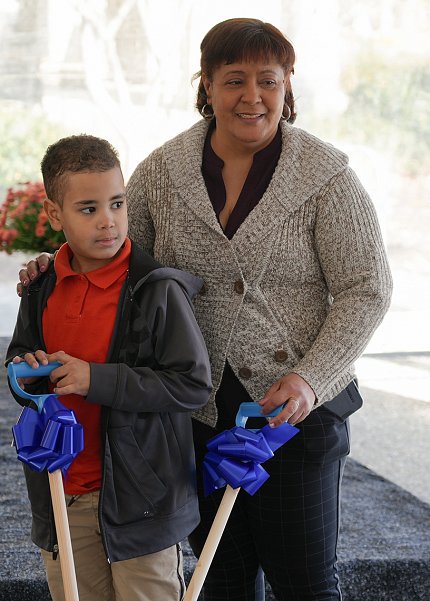
Photo: The Children's Inn at NIH
Around the time of her diagnosis, the CC began recruiting pediatric patients infected with HIV to enroll in drug trials.
“It was truly in the nick of time that I was able to be a part of a research protocol at NIH,” she said. “This was the only place offering any hope.”
Despite long days of doctor’s appointments and medical procedures, Gentille loved visiting campus, “not because I was some crazy kid, but because I stayed at the Children’s Inn when I came to NIH.” Everyone who works there, from the greeters at the front desk to the maintenance staff, knows its mission and purpose.
“I’m so thankful to be standing here thinking about where we are headed,” she said. “We’re poised to be building something extraordinary and take pediatric research to the next level.”
During closing remarks, Lucca thanked the many benefactors who have contributed to the project.
“The Inn of Tomorrow is much more than a building project,” concluded Lucca. “It represents commitment to innovation and compassion and creating a true healing space for the children and families who come to the NIH for life-saving treatments.”


